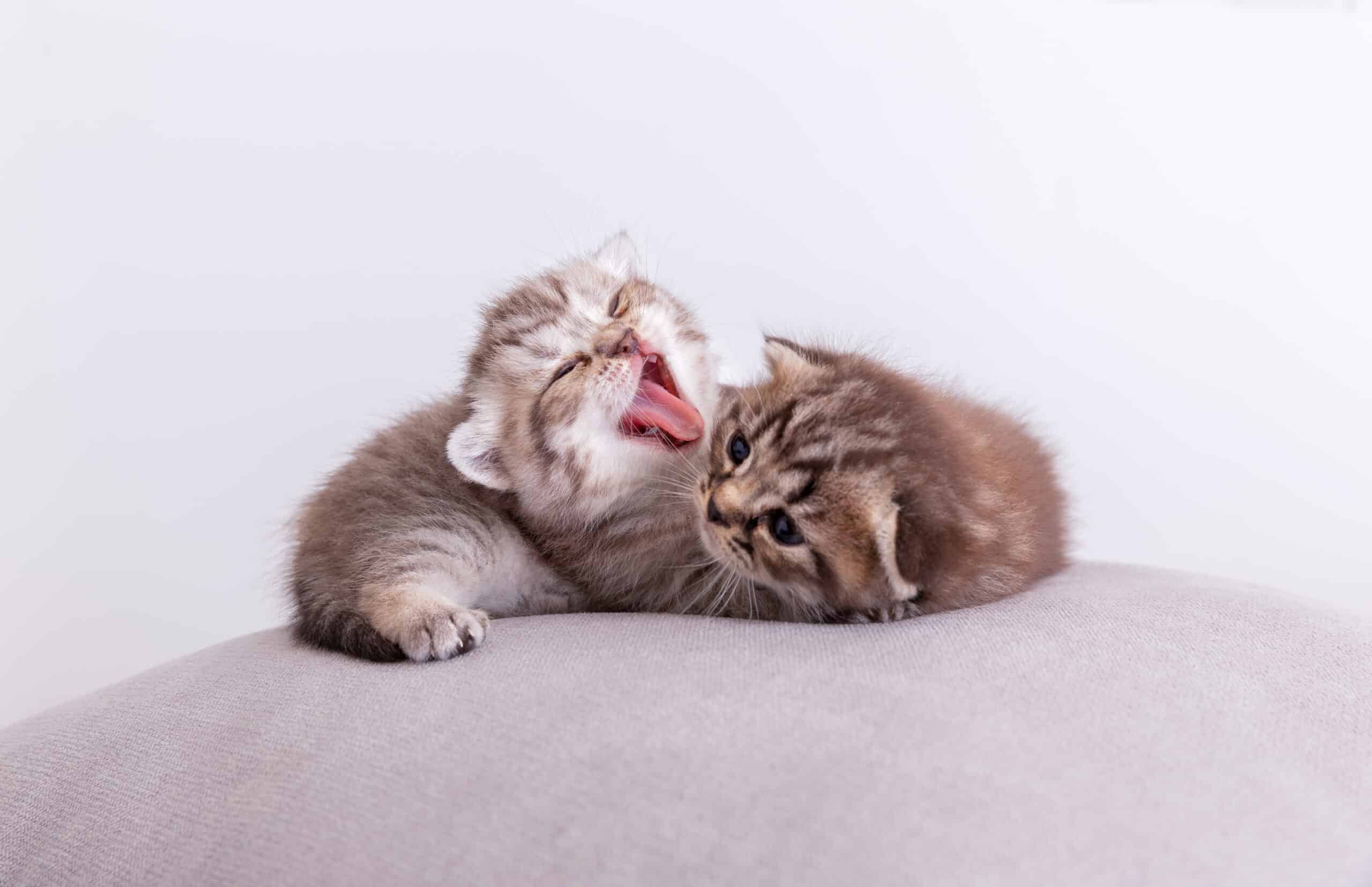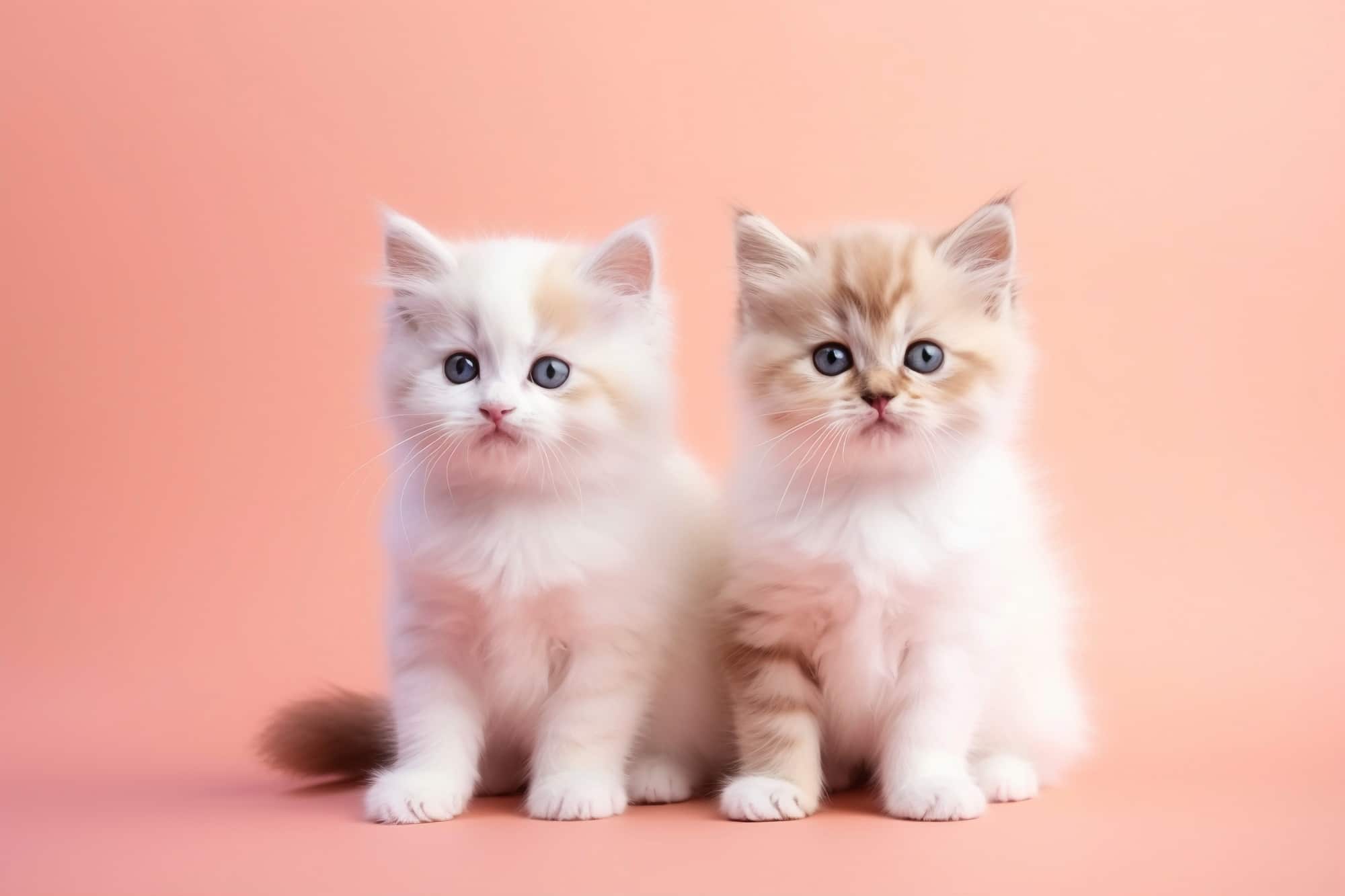Kittens, with their irresistible charm, innocence, and overwhelming cuteness, effortlessly capture our hearts. Their early months are not only a time of immense adorableness but also a pivotal stage for owners aiming to nurture a healthy and well-behaved feline companion. While you might anticipate kittens to simply be smaller versions of adult cats, their distinct characteristics often set them apart as almost a different species!
The unique and often overlooked aspects of kittenhood place these tiny creatures in a league of their own. Uncover the myriad wonders and peculiarities of kitten life as we explore these 15 astonishing facts about kittens.
15 Fascinating Kitten Facts
1. Birth Weight and Growth
At birth, kittens are astonishingly small, tipping the scales at a mere 3–4 ounces. They experience rapid growth, gaining roughly 4 ounces each week, and by the eighth week, they typically reach a weight of about 2 pounds. In terms of length, newborn kittens measure between 3–6 inches.
2. Opening Their Eyes
Newborn kittens epitomize vulnerability, relying heavily on their mother for nourishment and warmth. In the initial phase of their lives, their physical development is still underway, rendering them unable to explore their surroundings. It takes between 8 to 12 days before they start to open their eyes, a process that unfolds gradually over several days.
3. Blue Eyes at Birth

Image by wirestock on Freepik
Upon opening their eyes for the first time, all kittens reveal mesmerizing blue eyes, a result of the absence of melanin production which doesn’t commence until around their 7th week. This temporary lack of pigment gifts kittens with their characteristic blue eyes at birth. While certain cat breeds, particularly those that are white or have pointed features, retain this blue coloration into adulthood, most cats will see their eye color transition to shades of green, hazel, or brown as they age.
4. The Importance of Mother’s Milk
The act of nursing is vital for kittens, serving a purpose far beyond mere sustenance. Mother’s milk is laden with immunoglobulins, or antibodies, which are essential for the development of the kitten’s immune and gastrointestinal systems, setting the stage for a healthy adult life. In the initial 48 hours post-birth, the mother produces colostrum, an antibody-rich milk that is critical for newborns.
This colostrum is dense with nutrients, antibodies, and protective agents, maximizing the health benefits for the kittens. It is imperative that kittens consume this within their first 24 hours of life, as this is the only period during which they can effectively absorb these antibodies into their bloodstream. Although this immunity boost is temporary, lasting about 2-3 months, it is crucial for the early defense of the kittens against various health threats.
Read:
- 15 Cactus Cat Scratchers & Cat Trees for Southwestern Flair
- 12 Best Cat Enrichment Toys in 2024 – Reviews & Top Picks
- Best 12 Toys Your Bengal Cat Will Love!
5. Kittens Require Multiple Vaccination Cycles
The presence of mother-derived antibodies (MDA) in kittens can interfere with the effectiveness of vaccines by preventing them from properly stimulating the immune system. For vaccines to be effective, kittens must first reduce the level of MDA in their bodies, a process that can take anywhere from 4 to 20 weeks.
Determining the precise moment when MDA levels have decreased enough for vaccinations to work is challenging. To navigate this uncertainty, veterinarians recommend a series of core vaccinations spaced 2 to 6 weeks apart. Essential vaccinations for kittens include:
- Feline panleukopenia virus
- Feline viral rhinotracheitis (herpes virus type 1, or FHV-1)
- Feline caliciviruses
- Rabies virus
This schedule of regular booster shots ensures that a kitten receives protection at the optimal time, minimizing the risk of disease exposure during vulnerable periods. In cases where a kitten may not have received maternal antibodies, it’s crucial to consult with a veterinarian for tailored advice.
6. Avoid Adopting Kittens Younger Than 8 Weeks
Kittens that are taken away from their mothers before the age of 8 weeks often exhibit more behavioral issues compared to those who spend adequate time with their family. This crucial period allows them to learn important social and mental skills from their mother and siblings. Reputable breeders and caregivers usually ensure kittens are at least 8 weeks old before finding them new homes, to guarantee they are socially adept, well-mannered, and healthy. The vital window for socialization concludes around 9 weeks, by which time kittens should have positively encountered a range of experiences, including meeting new people, car travels, grooming, and vet visits.

Image by jcomp on Freepik
7. Hand-Rearing Kittens Comes With Challenges
While mother cats significantly ease the process of kitten upbringing by taking on most of the caregiving duties, in her absence, the responsibility intensively shifts to the owner. Hand-rearing kittens involves a rigorous regime that includes feeding them as frequently as every two hours and assisting with several tasks that they are unable to do themselves.
Kittens require a substitute for their mother’s milk to receive the necessary nutrients, along with gentle cleaning. Moreover, you’ll need to stimulate them to urinate and defecate, a task naturally performed by the mother through licking. Despite meticulous care, the absence of maternal interaction means it’s challenging to perfectly emulate the mother’s role. Consequently, kittens may grow up physically healthy but exhibit behavioral issues due to a lack of early social interactions.
Read:
8. Kittens Lack the Ability to Regulate Body Temperature
In the early stages of kitten care, ensuring a stable and warm environment is critical for their well-being. Kittens under 4 weeks old are not capable of regulating their own body temperature and depend on external warmth sources to stay at an appropriate temperature, which varies as they age.
Absent the warmth provided by their mother or a suitably heated environment—ideally above 80°F, adjusting with their age—kittens risk hypothermia. Maintaining a proper ambient temperature is crucial; without it, kittens may struggle with basic physiological functions, including the digestion and metabolism of food.
9. The Development and Loss of Deciduous Teeth
Kittens are born without teeth, but by about 3 weeks of age, their first teeth begin to emerge, coinciding with a period when they do not yet require them for feeding. Between 4 to 6 weeks, most of their 26 milk teeth will have appeared, with the full set expected by the end of the weaning process at 8 to 10 weeks.
Kittens will shed these milk teeth as they grow, paving the way for their 30 permanent adult teeth by the age of 6 to 7 months. Monitoring the teething process is important to identify any retained milk teeth, which can lead to dental issues such as malocclusion or infections due to overcrowding. Interestingly, the loss of baby teeth often goes unnoticed because kittens, like dogs, tend to swallow them.
10. Catnip’s Ineffectiveness in Young Kittens
Catnip is typically ineffective in kittens under the age of 6 months, not due to any prohibitions but rather because they simply do not respond to it. The ability to enjoy the effects of catnip, which include a burst of energy and a sense of joy lasting over ten minutes, comes from the reaction of their scent receptors to nepetalactone, a compound found in catnip. Kittens generally do not develop the necessary sensitivity to this compound until they reach 6 to 12 months old. Additionally, genetic factors determine whether a cat will respond to catnip at all, with some cats remaining indifferent to it throughout their lives.
Read:
- 15 Cactus Cat Scratchers & Cat Trees for Southwestern Flair
- 12 Best Cat Enrichment Toys in 2024 – Reviews & Top Picks
- Best 12 Toys Your Bengal Cat Will Love!
11. The Simplicity of Litter Training Kittens
Training kittens to use a litter box is usually straightforward, often requiring no more than placing the box in an accessible location and introducing the kitten to it. Cats instinctively prefer to bury their waste, making a litter box an ideal solution. Moreover, kittens often learn the basics of litter box use from their mother at an early age. While most kittens quickly grasp the concept, indicating the litter box as the appropriate place for their needs, a few may require additional guidance to become accustomed to using it.
From birth, kittens are like sponges, absorbing every aspect of their environment, which makes the first nine weeks crucial for shaping their personalities. The critical socialization window spans from the third to the ninth week of life. During this time, kittens learn from their mother about trust and caution, while interaction with their siblings under her watchful eye aids in developing their physical coordination, practicing essential life skills, and establishing social behaviors.
Human interaction is also vital at this stage, helping to minimize fearfulness and fostering positive relationships with people. Introducing kittens to a variety of humans, other animals, and new environments in a secure, controlled manner is key to ensuring they grow into well-adjusted adult cats.
Read:
- 15 Cactus Cat Scratchers & Cat Trees for Southwestern Flair
- 12 Best Cat Enrichment Toys in 2024 – Reviews & Top Picks
- Best 12 Toys Your Bengal Cat Will Love!
15. The Reality of Early Feline Pregnancy
Despite their youthful appearance and behavior, kittens can reach sexual maturity and become capable of pregnancy as early as 4 to 6 months of age. This early reproductive capability underscores the importance of consulting with a veterinarian to determine the appropriate timing for spaying or neutering, based on individual circumstances.

Image by jcomp on Freepik
Conclusion
From the moment they enter our lives, kittens enchant us with their endearing qualities and companionship. Enjoying the presence of a kitten also means acknowledging and navigating the pivotal early stages of their development. By providing diligent care and attention during their first few months, you can lay the foundation for a healthy, happy, and mutually rewarding relationship for years to come.
Read:








